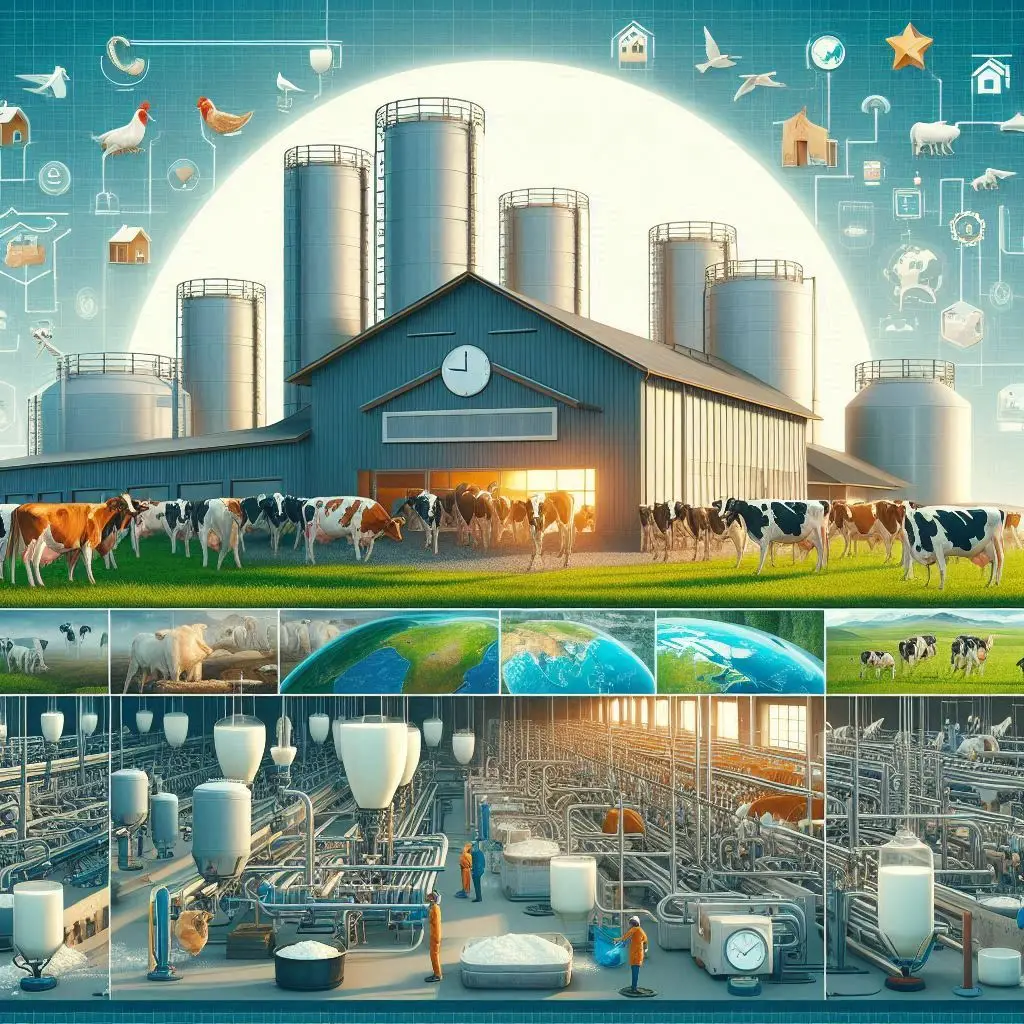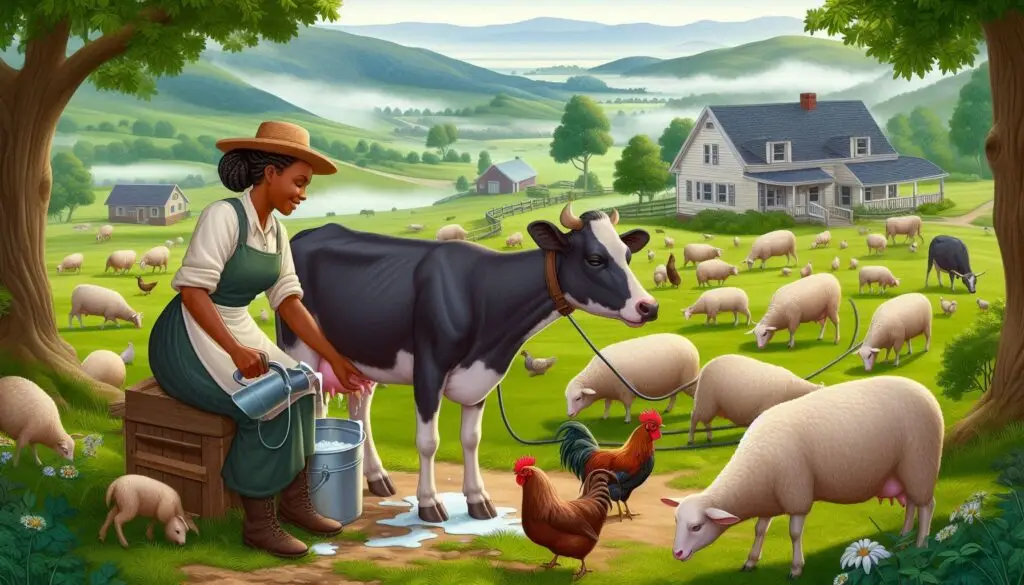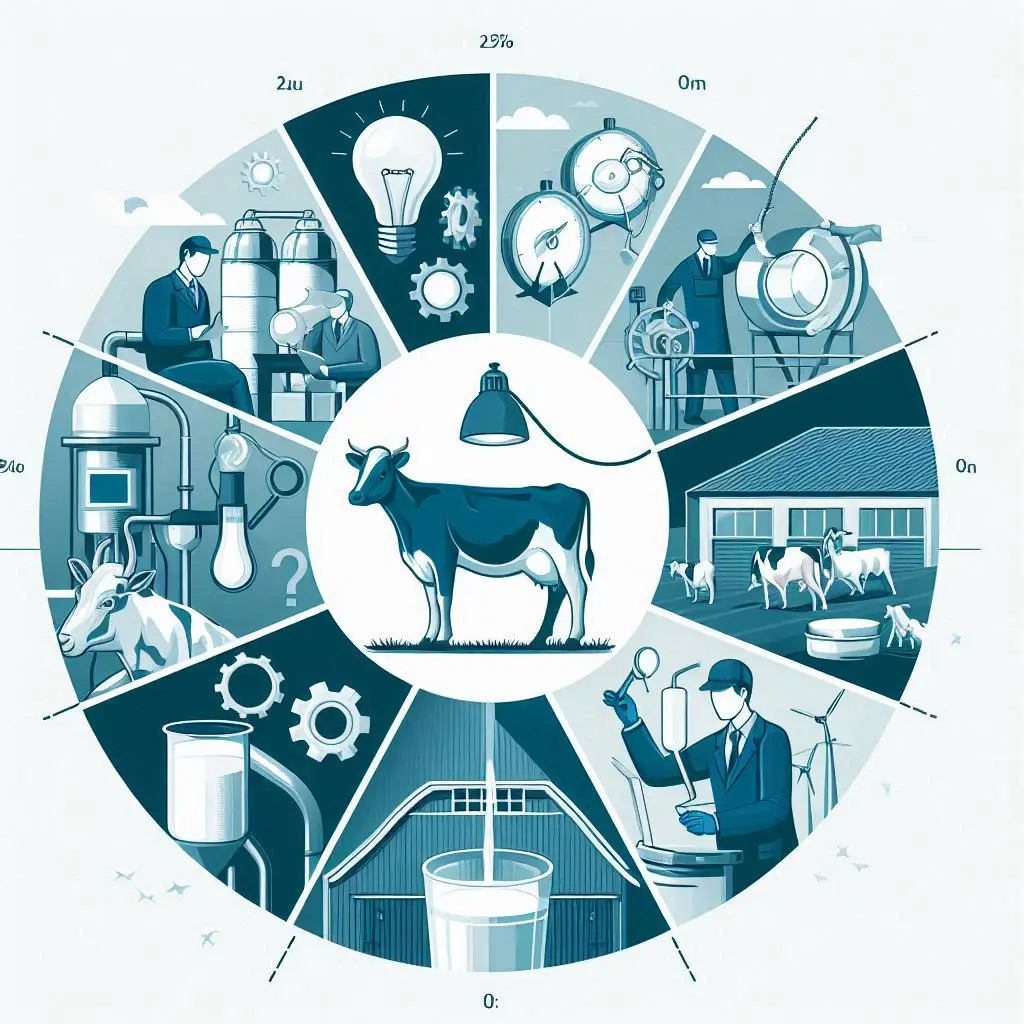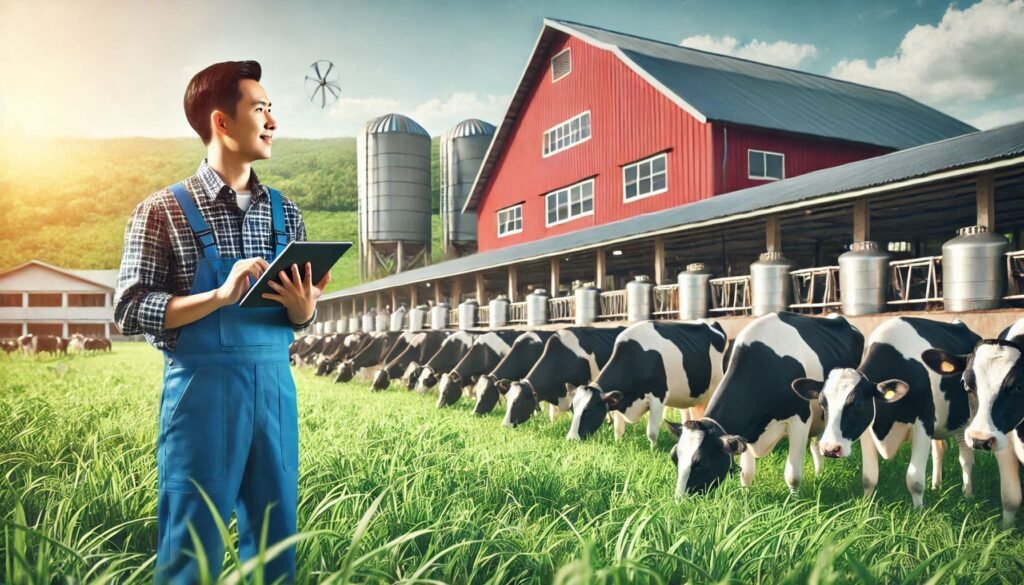Starting of a dairy farm, Capital and land requirement

Introduction
Dairy farming is a vital sector of agriculture that provides milk and dairy products essential for human nutrition. With the global demand for dairy products on the rise, starting a dairy farm can be a lucrative venture. However, it requires a thorough understanding of various factors, including capital investment, land requirements, and operational management. This guide will help aspiring dairy farmers navigate the complexities of starting and running a successful dairy farm.
Understanding Dairy Farming
Dairy farming involves the breeding and management of dairy cattle for milk production. The primary breeds used in dairy farming include Holstein, Jersey, Guernsey, and Ayrshire, each known for their unique milk production capabilities.
The Importance of Dairy Farming
- Nutritional Value: Dairy products are a significant source of calcium, protein, and other essential nutrients.
- Economic Contribution: Dairy farming contributes significantly to the agricultural economy, providing jobs and supporting rural communities.
- Sustainable Practices: Modern dairy farming incorporates sustainable practices that enhance productivity while minimizing environmental impact.
Capital Requirements
Starting a dairy farm involves substantial capital investment. The costs can vary widely based on the scale of the operation and local market conditions.
Initial Investment Breakdown
- Land Costs: The price of land varies significantly by location. On average, expect to pay between $1,000 to $10,000 per acre depending on the region.
- Infrastructure: This includes barns, milking parlors, and storage facilities. Building costs can range from $100,000 to $500,000.
- Equipment: Essential equipment includes milking machines, feeding systems, and tractors. Initial equipment costs can range from $50,000 to $200,000.
- Livestock: The cost of purchasing dairy cattle can range from $1,500 to $3,000 per cow, depending on the breed and age.
- Operational Costs: Ongoing costs include feed, veterinary care, labor, and utilities. These can total $200,000 to $400,000 annually.
Financing Options
- Personal Savings: Many farmers start with personal savings or family support.
- Loans: Agricultural loans from banks or credit unions can help cover initial costs.
- Grants and Subsidies: Various government programs offer grants and subsidies for new farmers.
Land Requirements
The amount of land needed for a dairy farm depends on the number of cows and the farming system employed.
Land Size Guidelines
- For Small-Scale Farms: A minimum of 5 to 10 acres is recommended for 20 to 50 cows.
- For Medium-Scale Farms: Approximately 20 to 40 acres is suitable for 100 to 200 cows.
- For Large-Scale Farms: Larger operations may require 100 acres or more to accommodate extensive herds and fodder production.
Fodder Production
Growing your own fodder is essential for reducing feed costs. Allocate a portion of your land for growing high-quality forage crops such as alfalfa, clover, and corn silage.
Operational Management
Effective management is crucial for the success of a dairy farm. This includes herd management, feeding programs, and waste management.
Herd Management
- Breeding Programs: Implement a breeding program to maintain herd health and productivity. Consider artificial insemination for genetic improvement.
- Health Monitoring: Regular veterinary check-ups and vaccinations are essential for maintaining herd health.
- Milking Practices: Develop a consistent milking schedule to optimize milk production.
Feeding Programs
- Nutritional Needs: Work with a nutritionist to formulate a balanced diet for your cows, ensuring they receive adequate nutrients for milk production.
- Feed Sources: Utilize both homegrown fodder and purchased feed to meet the dietary needs of your herd.
Waste Management
- Manure Management: Implement a waste management plan to handle manure effectively. Options include composting, anaerobic digestion, and land application.
- Nutrient Management Plans: Develop a nutrient management plan to ensure that manure is used efficiently and complies with environmental regulations.
Legal and Regulatory Considerations
Starting a dairy farm involves navigating various legal and regulatory requirements.
Licensing and Permits
- Business Registration: Register your dairy farm as a business entity.
- Health and Safety Regulations: Comply with local health and safety regulations regarding dairy production.
- Environmental Regulations: Adhere to environmental laws related to waste management and land use.
Insurance
Obtain insurance coverage for your farm to protect against potential risks such as natural disasters, disease outbreaks, and liability claims.
Marketing Your Dairy Products
Effective marketing strategies are essential for selling your dairy products and establishing a customer base.
Branding and Packaging
- Brand Identity: Develop a strong brand identity that reflects the quality of your products.
- Packaging: Invest in quality packaging that preserves product freshness and appeals to consumers.
Distribution Channels
- Local Markets: Sell directly to consumers at farmers’ markets or through community-supported agriculture (CSA) programs.
- Retail Partnerships: Establish partnerships with local grocery stores and restaurants to distribute your products.
- Online Sales: Consider setting up an online store to reach a broader audience.
Conclusion
Starting a dairy farm is a rewarding but challenging endeavor that requires careful planning and management. By understanding the capital and land requirements, implementing effective operational strategies, and navigating legal considerations, you can establish a successful dairy farming business. With the right approach and dedication, your dairy farm can thrive in this growing industry.
For more pearls of Vets Wisdom:






Responses